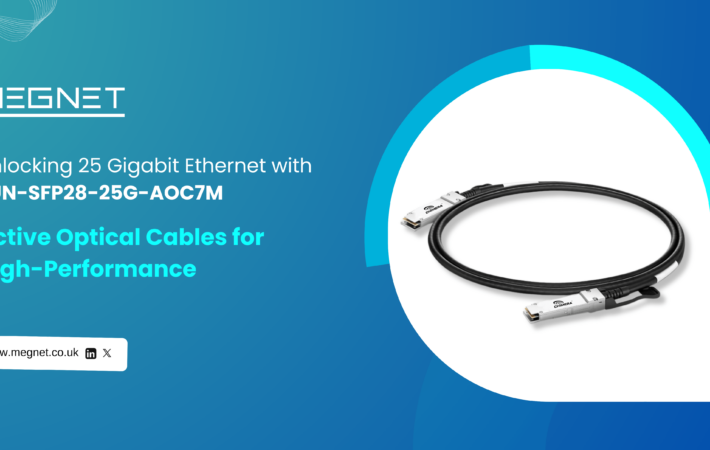
Unlocking the Future of High-Speed Data Transmission
In this article, we will delve into the technical aspects of transceiver form factors, focusing on the superior capabilities of 40G and 100G optical transceivers. With our expertise in the field, we aim to equip businesses with the knowledge to make informed decisions when it comes to optimizing their network infrastructure. So let’s explore the intricate world of transceiver form factors and unleash the power of advanced optical connectivity.
As a leading provider of optical transceivers from renowned brands like Chimera, HP, Dell, and more, our organization understands the importance of choosing the right form factor for your high-speed networking needs.
Decoding Transceiver Form Factors:
Transceiver form factors are key determinants in establishing seamless connectivity between networking devices. They encompass various physical and electrical specifications to ensure compatibility and reliable data transmission.
Let’s delve into some technical details of the most prominent form factors:

a) QSFP28 (Quad Small Form-Factor Pluggable 28):
QSFP28 has emerged as the industry-standard form factor for 100G optical transceivers. It utilizes four transmit and four receive lanes, allowing for high-density interconnections. With its support for protocols like Ethernet, InfiniBand, and Fibre Channel, QSFP28 enables businesses to achieve unparalleled performance in data centers, enterprise networks, and telecommunications applications.


b) QSFP+ (Quad Small Form-Factor Pluggable Plus):
QSFP+ is a well-established form factor for 40G optical transceivers. Although gradually being replaced by QSFP28 for higher-speed applications, QSFP+ remains prevalent in legacy systems. Its four lanes of high-speed data transmission, along with compatibility with Ethernet, Fibre Channel, and InfiniBand, make it a versatile choice for various networking environments.

Unleashing Technical Superiority:
a) Enhanced Data Rates:
40G and 100G transceivers provide superior data rates, catering to the exponential growth in bandwidth requirements. QSFP28 supports a data rate of 100Gbps, while QSFP+ offers 40Gbps. These higher data rates enable businesses to handle massive volumes of data with ease, facilitating efficient operations and data-intensive applications.
b) Optimal Density and Scalability:
With the ever-increasing need for space optimization in data centers, QSFP28 and QSFP+ transceivers deliver enhanced port density, enabling businesses to maximize rack space utilization. This not only reduces the physical footprint but also provides scalability options for future network expansions.
c) Multi-Protocol Compatibility:
QSFP28 and QSFP+ transceivers are designed to support multiple protocols, ensuring seamless integration with existing network infrastructures. From Ethernet to Fibre Channel and InfiniBand, these transceiver form factors offer flexibility and versatility, allowing businesses to adapt to evolving industry standards and meet diverse connectivity requirements.
The Competitive Landscape:
As a dealer of optical transceivers from leading brands like Chimera, HP, Dell, and more, we understand the importance of staying updated with the latest market trends.
Here are some insights into the competitive landscape:
a) Growing Demand for 40G and 100G:
The market demand for higher-speed transceivers, particularly 40G and 100G, is on the rise. As businesses embrace advanced technologies like cloud computing, artificial intelligence, and IoT, the need for faster data transmission becomes crucial. QSFP28 and QSFP+ transceivers stand at the forefront of this demand, providing the necessary bandwidth and performance.
b) Data Center Expansion:
Data centers continue to witness significant growth, driven by the increasing adoption of cloud services and digital transformation initiatives. This surge in data center deployments necessitates efficient and reliable connectivity solutions, where 40G and 100G transceivers play a pivotal role. By providing optimal data rates and scalability options, these transceiver form factors enable businesses to address the evolving demands of their data center infrastructure.
c) Expert Insights: Paving the Future of Transceivers:
Experts predict a continuous surge in the demand for higher-speed transceivers, driven by emerging technologies and the ever-increasing need for data bandwidth. As businesses strive for faster and more reliable networks, the technical superiority offered by form factors like QSFP28 and QSFP+ becomes paramount. These advanced transceiver solutions are poised to shape the future of networking, facilitating seamless connectivity and empowering businesses to thrive in the digital era.
When it comes to optimizing your network infrastructure, the choice of transceiver form factors plays a crucial role. With our extensive range of optical transceivers from renowned brands like Chimera, HP, Dell, and more, we are committed to helping businesses unleash the full potential of their networks. By harnessing the technical superiority of 40G and 100G transceivers, organizations can ensure efficient data transmission, scalability, and future-proof networking solutions. Partner with us to elevate your network connectivity to new heights and gain a competitive edge in today’s fast-paced digital landscape.
Explore our comprehensive range of advanced optical transceivers from top brands like Chimera, HP, Dell, and more on our website. Contact our team of experts today to find the perfect transceiver solution for your business needs. Let us help you transform your network infrastructure and unlock unparalleled performance in the digital age.
Schedule An Expert Consultation Today!


FAQ's
Yes, QSFP28 transceivers are backward compatible with QSFP+ ports
Yes, QSFP28 transceivers are commonly used for data center interconnects due to their high data rate and compatibility with different protocols.
The maximum distance QSFP28 transceivers can reach depends on the type of optical module used. Single-mode QSFP28 modules can support distances up to several kilometers, while multimode modules are typically limited to shorter distances within data centers.
Yes, some switches or devices with QSFP28 ports can be configured to operate at lower speeds, such as 40Gbps or 25Gbps, by using appropriate transceiver modules or breakout cables.
QSFP28 is an updated version of QSFP+ (Quad Small Form-Factor Pluggable Plus), supporting higher data rates. QSFP28 allows for 100Gbps connectivity, while QSFP+ supports up to 40Gbps.
Yes, QSFP28 transceivers are available in different variants to support various distance requirements, including short-range and long-range applications.
Yes, QSFP28 transceivers are available in both single-mode and multimode variants








Leave a comment
Your email address will not be published. Required fields are marked *